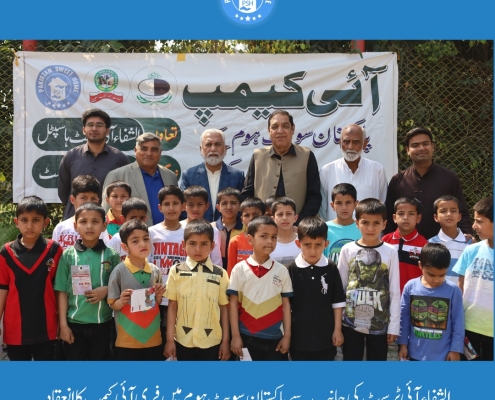Pakistan Sweet Home
Pakistan Sweet Home started as a project of Bait-ul-Mal in 2009 when a single child from Swat, KPK, was handed over to Mr. Zamurrad Khan
Since then, the Pakistan Sweet Home family has grown to 5 Sweet Home centers across Pakistan.
Our teams also work in the areas worst affected by poverty and climate crises, offering food parcels, funding access to education, essential medical care, and emotional healing to more than 10,000 children.
As one of the first SECP-registered orphanages in Pakistan, our work has made a huge difference in young lives that may have been lost.
Shriners Children’s
At Shriners Children’s, we are committed to reaching as many children as possible, wherever they may live, and offering them our unique, patient-centered, wrap-around care.
For most of its history, our health care system has been known as Shriners Hospitals for Children. As we adapt to current nationwide trends in health care, especially the emphasis on outpatient care, and some locations become clinics or outpatient centers, we have introduced the phrase “Shriners Children’s.” It is shorter and more definitive – clearly stating who we are and what we care about. We are Shriners and our commitment is to Children. In today’s fast-paced world, this short phrase helps to succinctly and clearly define us.
Since opening our first hospital in 1922, we have been devoted to providing high-quality specialty medical care to the children and families who come to us, regardless of their ability to pay or insurance status. A century later, our commitment hasn’t changed — only expanded.
Our three-part mission has one goal: to change and improve lives. We do this by caring for our patients, conducting research to gain knowledge and develop new treatments, and providing educational opportunities for physicians and other healthcare professionals.
The Tunnel to Towers Foundation
Are you a veteran or first responder with a catastrophic injury that affects your mobility? Do you know someone who suffered a severe injury in the line of duty? If you answered, “Yes,” to either question, then you or someone you know may be eligible to participate in the Foundation’s Smart Home Program.
The Tunnel to Towers Foundation builds mortgage-free smart homes for our most catastrophically injured veterans and first responders. Each home is designed to address the unique needs of each individual.
Smart homes host a myriad of features such as automated doors and lighting, wider halls and doorways, special showers to accommodate wheelchairs, automatic door openers, cabinets, counters, and stove tops that can be raised and lowered, back-up generators, and central heating and air conditioning systems that can be controlled by tablets. These homes help our most severely injured veterans and first responders to reclaim their day-to-day independence.
Our process is a simple one. Simply fill out the application and one of our liaison officers will contact you and walk you through the screening process and help you complete it together. It is simple, confidential, and comes without any obligation.
To see if you or someone you know may meet the program eligibility requirements, apply for a smart home here.
St. Jude Children’s Research Hospital
Everyone’s support makes a difference
Since we opened in 1962, our mission has been to find cures for kids with cancer and other life-threatening diseases, regardless of race, ethnicity, beliefs or a family’s ability to pay.
In the years ahead, an estimated 89% of the funds necessary to sustain and grow St. Jude must be raised from generous donors. This is why supporters are so important in fulfilling the promise of St. Jude founder Danny Thomas, who believed that “no child should die in the dawn of life.”
ZANMI BENI
OUR BEGINNINGS
ZANMI BENI WAS BORN OUT OF TERRIBLE TRAGEDY; THE EARTHQUAKE THAT DEVASTATED HAITI ON JANUARY 12, 2010, AND AS A RESPONSE TO A GREAT NEED; A GROUP OF EXTREMELY VULNERABLE CHILDREN LEFT HOMELESS IN THE AFTERMATH OF THE EARTHQUAKE.
These children, many of whom were disabled, orphaned, or abused, were living in a single ward at the General Hospital in Port-au-Prince, (Hôpital de l’Universite d’Etat d’Haiti, or HUEH). The children, many of whom had lived at the hospital ward for years, had been abandoned or had been left at the hospital by parents who were, sadly, unable to care for them. Pre-earthquake living conditions for the children were less than optimal, but when the quake hit, the building suffered severe damage and the already-overtaxed hospital staff, overwhelmed with throngs of severely injured people, were unable to even provide basic care for the children. When Paul Farmer, Loune Viaud and Nancy Dorsinville arrived at the hospital a few days after the earthquake, they found the children alone, hungry, frightened and surrounded by chaos, injury, disease, and death. It was apparent that something had to be done immediately to protect these children, and that it would be necessary to secure a safe and permanent home as soon as possible.


















